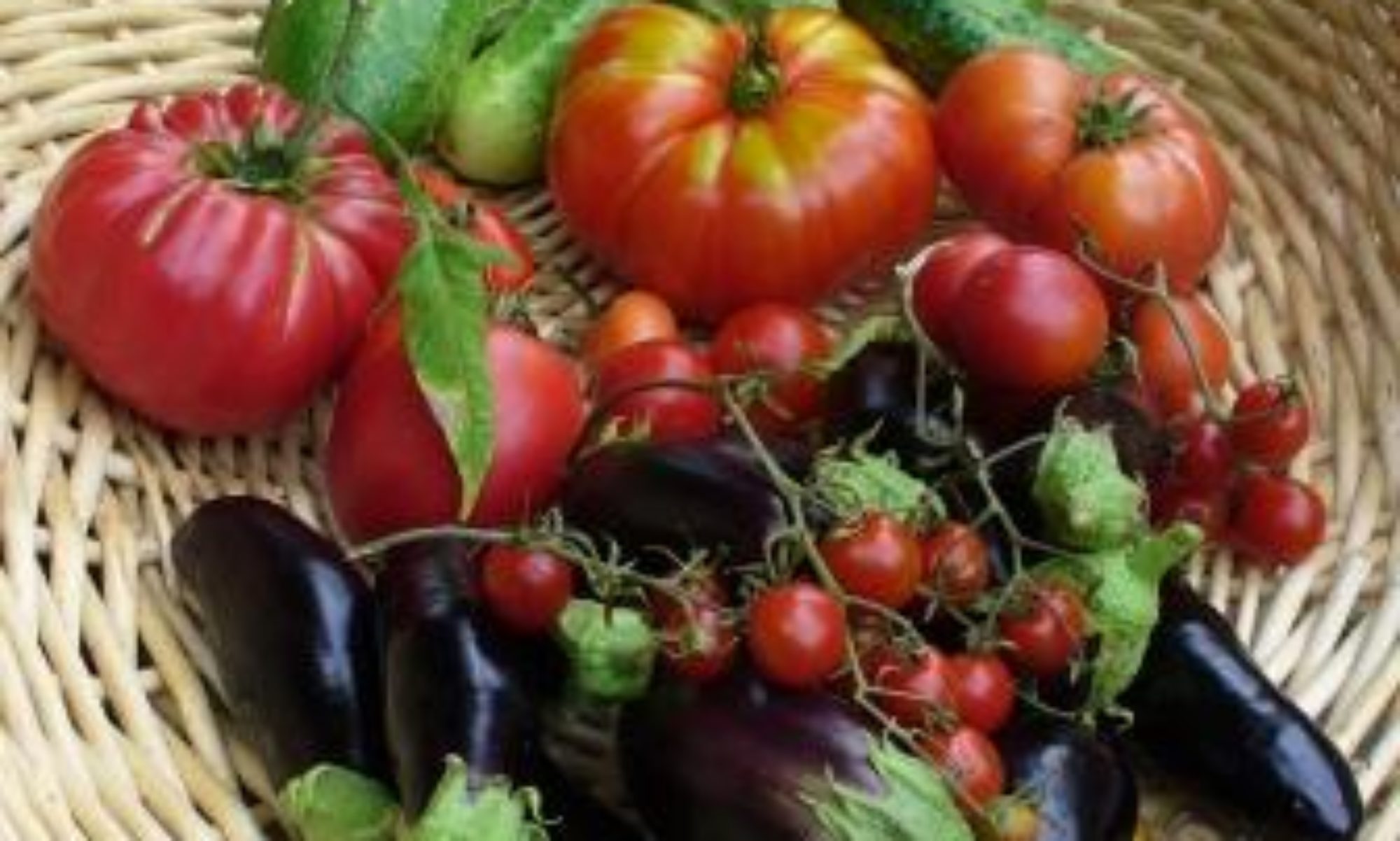Bloody Butcher ripened early, with a moderately productive crop of golf ball sized fruit.
Marmande
Marglobe
Anna Russian
Debarao
Debarao is advertised as an early-ripening paste variety.
2014 However, in this unusually cool summer, Debarao set an incredibly large crop of fruit, but virtually none ripened. In contrast, I did get a few ripe fruit from other paste varieties such as San Marzano.
2015 – Aug.8 7′ vine with 30 fruit and half of these are reipe.

Green Zebra
Costoluto Genovese
New Farm Machinery
OK, not entirely new. Here is the ~1925 Minneapolis Moline horse-drawn manure spreader that I purchased recently. After a little face-lift (rust removal, painting, pumping grease into a gazzilion lube nipples) it works like the day it was born. Until I get a couple of our horses trained to pull, I will be running this behind my Kubota.
What does celery like?
Growing good celery is difficult. I paid close attention to achieving top-notch soil fertility in the main area where I transplanted celery, this year. Celery loves water, and as this year provided about the wettest May and June in recorded history, I expected the celery to be excellent. It was not. Most of the plants were small and tough and they bolted early. To my surprise, the only celery plants that really thrived were planted in a portion of the garden that received so much rotted horse manure that the organics level was of the charts. Most plants in this part of the garden (for example Swiss chard) did really poorly, but the celery loved it. I am guessing it is my heavy clay soil that discourages the celery. Apparently incorporating otherwise excessive levels of organic matter improves the soil drainage sufficiently to suit celery.
Summer lives – so do I
You may wonder whether I am still alive, since I have not posted recently. In fact, I am still kicking, and here is an update. The April snowfall was only a taste of things to come. The months of May and June were consistently colder and wetter than normal – setting records in fact. Gardeners all around the Puget Sound reported that their corn and bean seeds rotted in the ground, and that was certainly my experience. A late seeding of beans finally took hold, but the crop will certainly be late this year. Pretty much everything in my garden will be late this year. Onions were a complete disaster. The roots pretty much all rotted off. Garlic did just a little better. About half the garlic plants survived well enough to produce bulbs.
I set out my 68 heirloom tomato varieties, under plastic cloches, in mid-May, and removed the plastic in late June. Despite the lousy weather, I still was able to supply my local feed store/garden center with a large number of healthy tomato starts. Sales was down about 20% from last year, probably because of the crappy weather. Still, $730 worth of plants were sold, from which I netted $365. Weather in July was unusually sunny, but the nights were unusually cool. The result is that I have HUGE tomato plants, with very few fruit set. Even plants that I maintained in the greenhouse set fruit later than last year. Last year, I had my first ripe tomatoes in the greenhouse by July 4. This, year, the first ripe greenhouse tomato appeared on July 26. For the plants growing outside, it appears that the fruit set is about 10 days later than last year. The first greenhouse varieties to ripen included Anna Russian, Costolutto Genovese, Sausage and Mule Team. First Pick is not far behind.
$1>$1>







